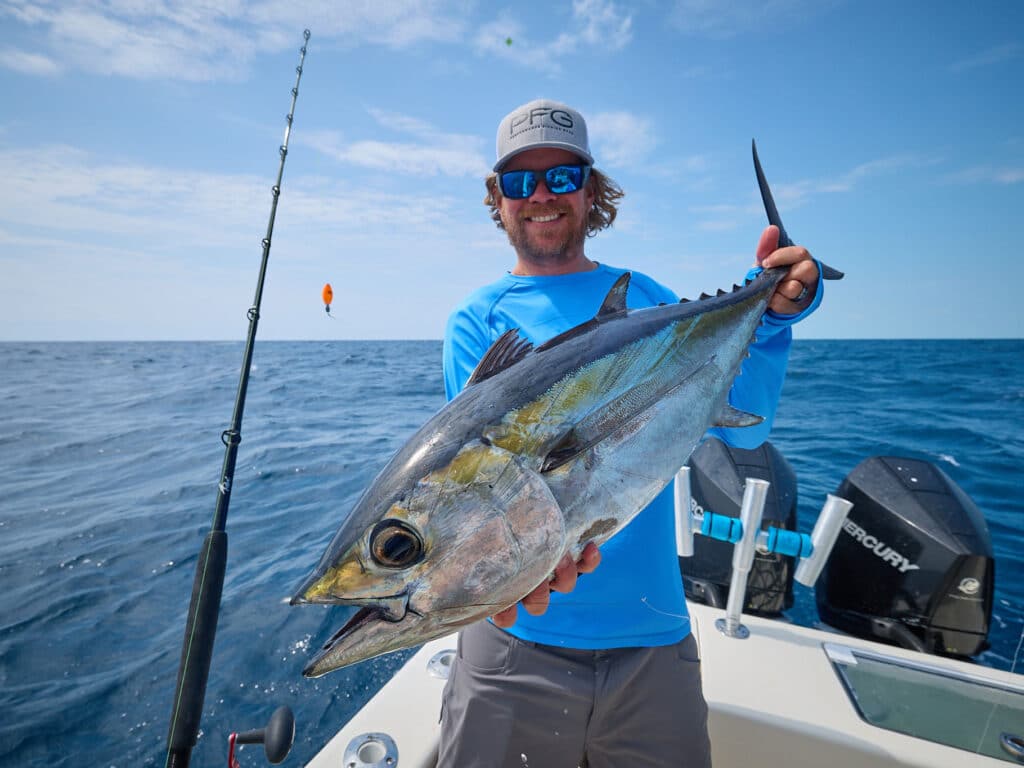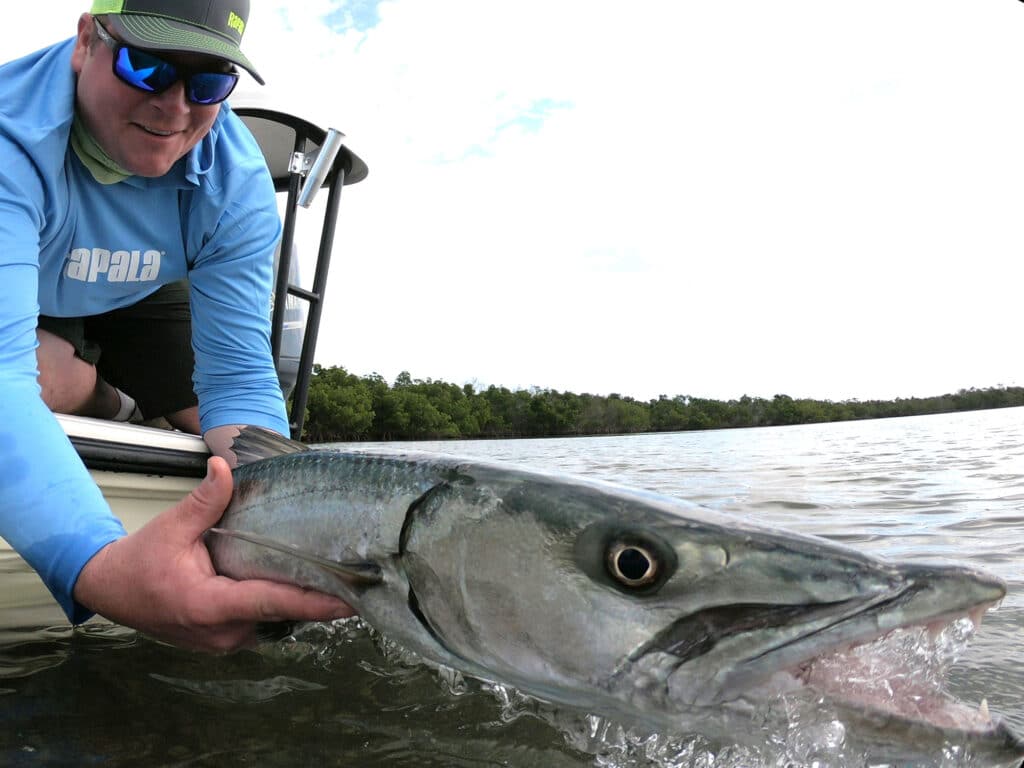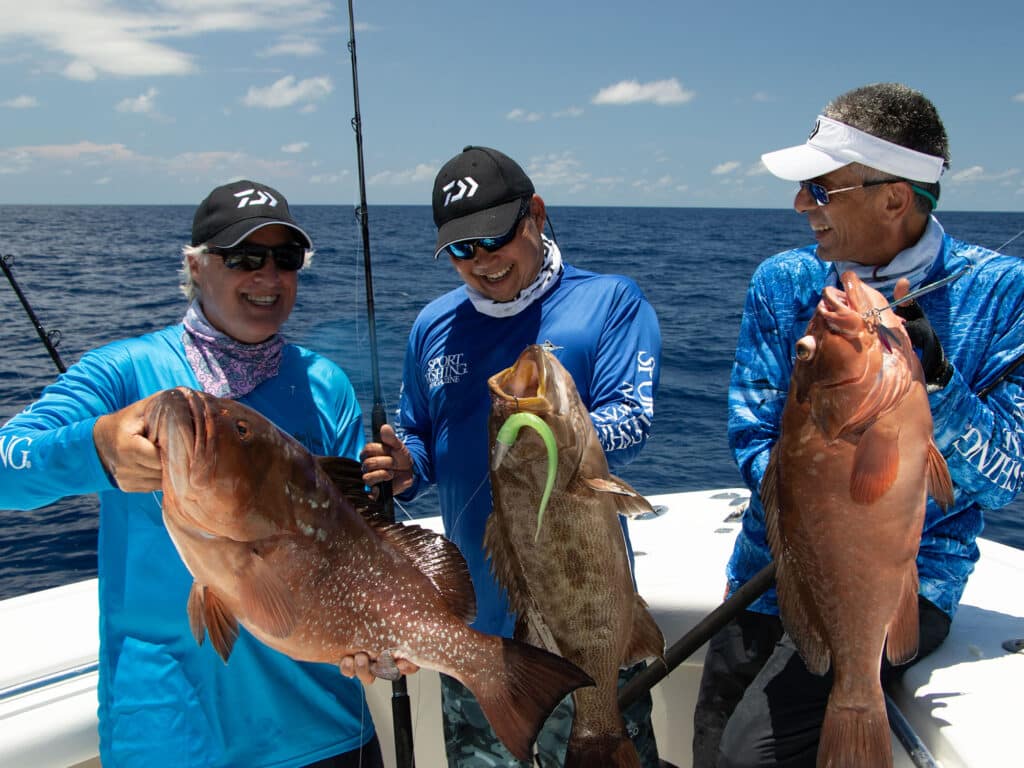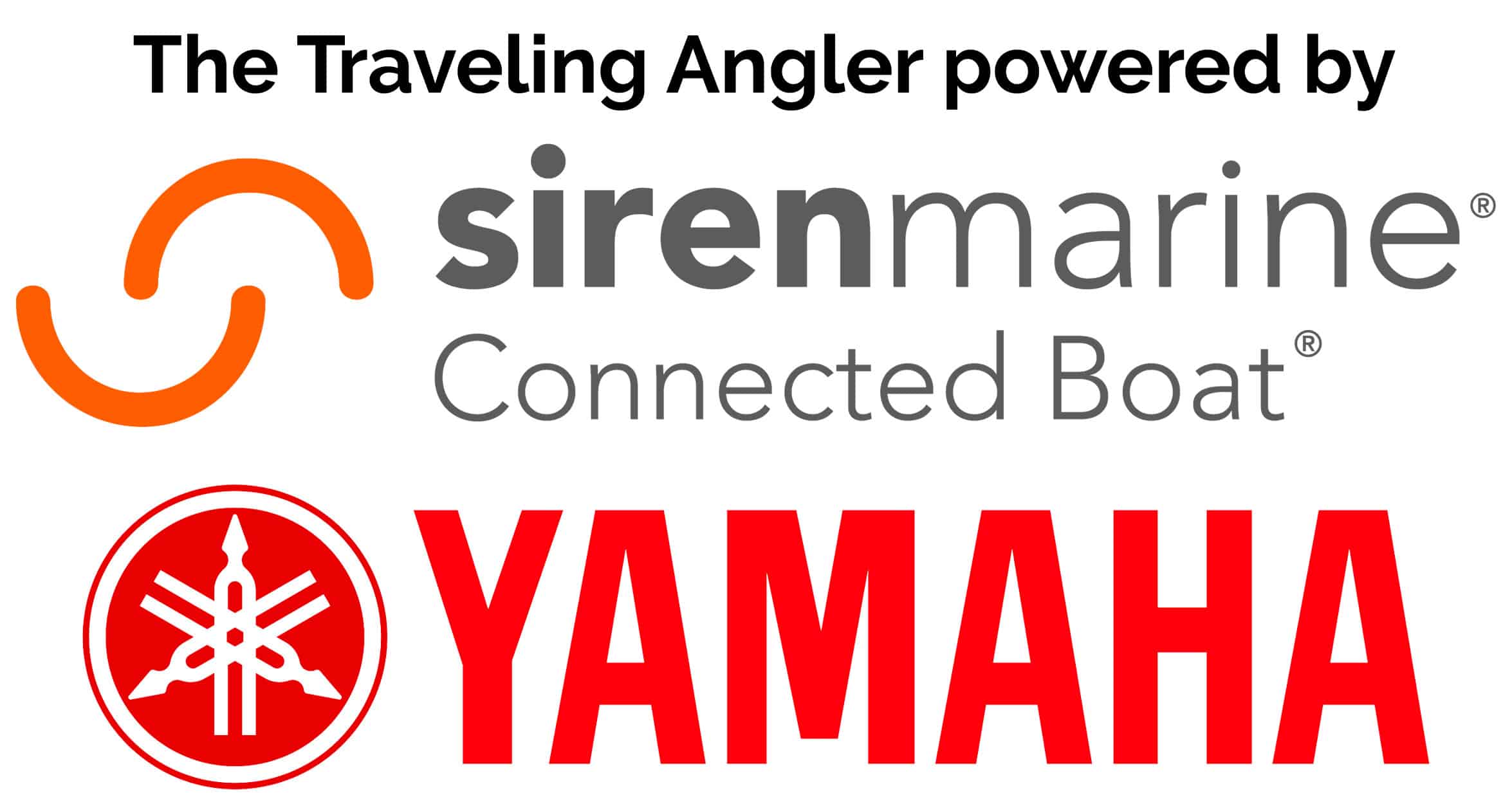
Stretching for more than 120 miles southwest from just below Miami is a string of 800 islands known as the Florida Keys, a coral archipelago that’s the only living-coral barrier reef in the United States. Certainly, for fishermen in the U.S., there’s no other place like the Keys in terms of its diversity of habitats and game fish, and a long- and well-established infrastructure to make anglers’ dreams come true.
As one drives south, you’ll see names familiar to serious anglers: Key Largo, Islamorada, Marathon, Sugarloaf and the Lower Keys, and finally at road’s end, Key West itself. Key West is also the jumping-off point for the Dry Tortugas and the Marquesas Islands.
The Keys has something for just about every angler’s preference — seemingly unending clear flats, the productive waters of vast Florida Bay and adjacent Everglades, miles and miles of fish-attracting bridges, the lush coral reef itself and, just beyond, the promise of blue waters that kiss the western edge of the Gulf Stream.

The list of game fish that anglers hook in the Keys is far too extensive to include here. You can figure that any species inhabiting tropical and warm-temperate waters will be found in the Keys. High on the list of many enthusiasts are the “big three” of the flats.
- That means tarpon — of 14 IGFA tippet-class world records for tarpon around the globe, 10 were set in the Keys/Florida Bay.
- That means permit — of 18 line-class world records for permit, 12 came from the Keys, and of 13 tippet-class fly-rod records, 12 were caught in the Keys.
- These waters similarly dominate for bonefish records. An iconic sight here is the guide standing on a poling platform, pushing a skiff with a long fiberglass pole, as an angler stands ready at the bow.
Of course, the Keys is much more than flats fishing, with opportunities to troll, fish live baits on the drift or from kites just off the reef. There, you can expect sailfish, mahi, wahoo, blackfin tuna and more. And speaking of blackfin, at least half the IGFA world records for line and tippet classes are from the Florida Keys.

Planning a Trip
When to Go: For the Keys, truly anytime you can go is a good time when it comes to fishing. Sure, some seasons/times are better for some species than others, but you’ll find great opportunities every month of the year.
That said, in planning a trip, you might want to consider weather and the numbers of fellow visitors likely to be on hand. Drier and breezier weather is the norm during the primary tourist season, during winter and spring, when the Keys are busy with visitors, at best, and overrun, at worst. Things will take longer and cost more. But of course, it will be warm — particularly when compared with winter up north.
On the other hand, waiting until summer and early fall when crowds have dispersed promises lower prices and a more relaxed ambience. With weather, on the plus side, it’s generally and often delightfully flat calm. However, expect things to really heat up by afternoon, when anglers also frequently must dodge squalls that build up. Then there’s the 800-pound gorilla that might show up anytime June through October: hurricanes.

Where to Go and How to Get There: Miami International is the closest major airport; if you can avoid horrendous traffic, you can be in the Keys in a rental car in less than two hours. Alternatively, fly directly into Key West’s international airport. Of course, many folks enjoy the unique drive over 42 bridges on U.S. 1, the Overseas Highway — as long as they’re not in a rush (especially on weekends in high season). Figure three hours or so from the northern end of the route to Key West. As far as hotels, resorts and — for those trailering boats — marinas, there are too many to count. If planning to visit in winter or spring, book many months ahead; much less lead time is required in summer.
What to Expect: If fishing on guided trips, tackle isn’t required. Generally Keys guides have plenty of gear — the right gear and usually good quality. That said, anglers who want to bring their favorite outfits should find plenty of use. As noted, whether you prefer fishing flats, backcountry, reefs or blue water, you can fulfill your desires any time of year. Ditto fishing day or night. Night fishing around bridges is a productive bet for snook and tarpon.

Besides fishing, the main attraction in the Keys would be diving. For some that means spearfishing; for others, it’s observation; and in season, in a big way, it’s “bugs” — gathering lobsters. The Keys also offers lots of fests and festivals, particularly the Bohemian, irreverent Key West with its annual Hemingway Days and Fantasy Fest.
As with many coral reefs globally, the Keys’ coral has had issues in some areas. Accordingly, a number of agencies are involved in reef protection and restoration, such as the Coral Restoration Foundation and Mote Marine Laboratory in Sarasota which has received a $7 million grant from NOAA for Florida reef restoration.









